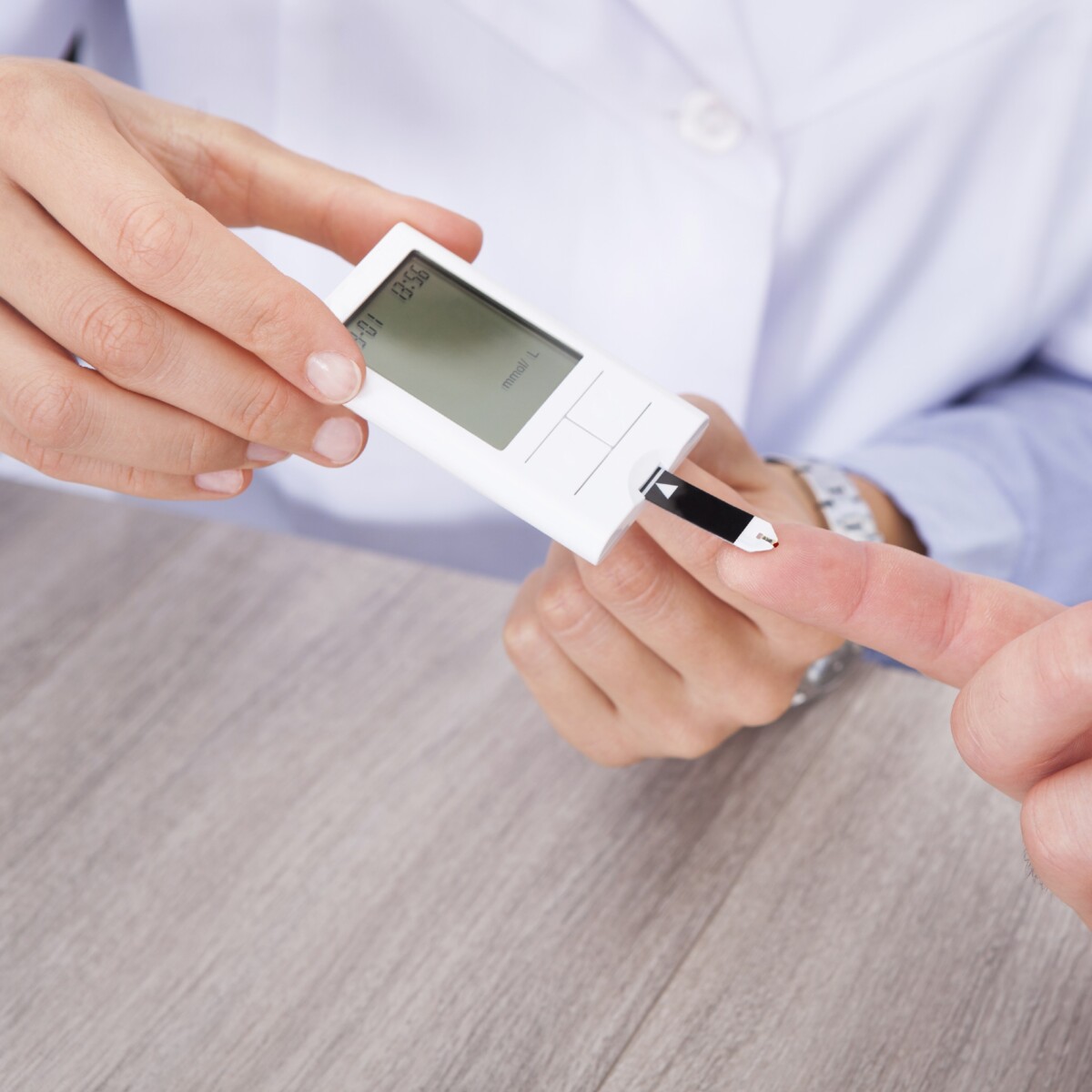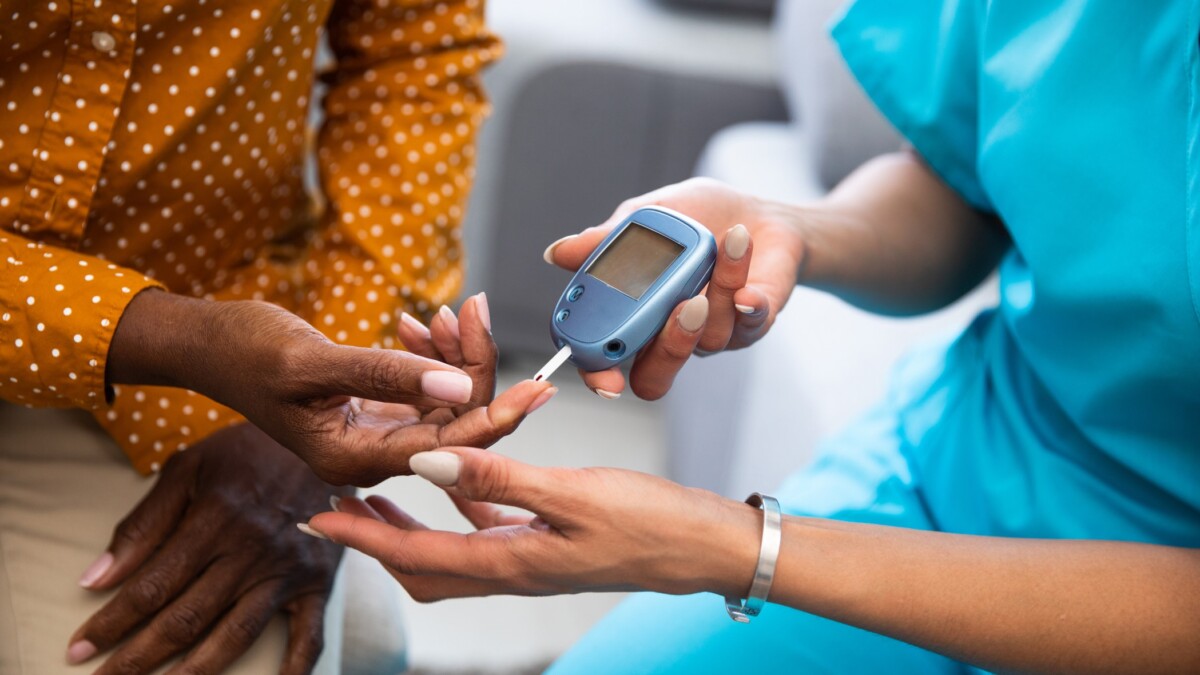In recent years, there has been a seismic shift in how patients approach healthcare, with a significant surge in the adoption of digital tools designed to promote healthier lifestyles. Canadians are exploring ways to integrate technology into their healthcare routines, and this trend is particularly evident in diabetes management. In this article, we explore digital innovations in diabetes care. This article will focus on two frequently encountered blood glucose monitoring methods in community practice: intermittently scanned continuous glucose monitoring (isCGM)systems and traditional glucometers.
Overview of Intermittently Scanned Continuous Glucose Monitoring (isCGM) Systems

Intermittently scanned continuous glucose monitoring systems, such as the Freestyle Libre, have become attractive for patients looking to measure their glucose levels without drawing blood from a fingertip to obtain a blood sample. An isCGM systemuses an external sensor with a small filament inserted under the skin to measure glucose concentrations in the interstitial fluid.
The sensor is typically applied to the upper arm and can be worn continuously for up to 14 days. The sensor can be scanned by a reader device, transmitting, and storing 8 hours of glucose data on the reader. A person with diabetes who performs at least three sensor scans daily can generate a 24-hour blood glucose profile.
The wealth of historical blood glucose data generated by isCGMs and their ability to minimize the use of test strips make this an attractive method for certain patients. isCGMs are not without their faults. The main drawbacks include cost, adhesive issues, and site irritation where the sensor is applied.
The Role of Glucometers in Diabetes Management
Glucometers require patients to use a lancet device to pierce the fingertip to obtain a drop of blood for a test strip. Once the sample is loaded, the test strip is inserted into the blood glucose meter, generating a highly accurate reading of the blood sugar level for that patient at that specific point in time.
A glucometer’s utility in detecting hypoglycemia and the ability to provide blood glucose levels in real-time has made glucometers a staple in diabetes management. Diabetes Canada recommends that individuals using insulin more than once daily should conduct capillary blood glucose (CBG) testing as an essential part of diabetes self-management. According to the most recent Diabetes Canada guidelines, individuals using insulin more than once daily should conduct CBG testing at least 3 times per day, and ensure that both pre- and postprandial measurements are taken. For individuals with type 2 diabetes on once-daily insulin, in addition to noninsulin antihyperglycemic agents, testing at least once a day at variable times is recommended.
The testing frequency for non-insulin patients should be individualized depending on their medication regimen, glycemic control, and risk of hypoglycemia.
Limitations of glucometers include using lancet needles to draw a blood sample, which may cause patients pain and discomfort. In addition, glucometers can only provide a snapshot of an individual’s blood glucose levels, which limits the amount of data generated.
Newer blood glucose meters come equipped with smartphone connectivity, which aims to solve this issue and allow patients to track and share their blood sugar data with healthcare professionals.
One notable example is the new platform launched by Ascensia, GlucoContro. GlucoContro is a platform that automatically syncs data from the CONTOUR®DIABETES app that is connected to a CONTOUR®NEXT GEN or ONE blood glucose meter. The blood glucose information from the meter can then be accessed remotely by their healthcare professional.
The integration of new technologies with more traditional methods of diabetes management presents exciting opportunities for patients and healthcare professionals to collaborate and take control of their health.
isCGM vs CBG: Coverage
While many private insurance plans provide coverage for isCGMs systems, only Ontario residents managing diabetes with insulin receive public funding through ODB. Currently, ODB covers the Freestyle Libre readers, and up to 33 sensors per year if the individual qualifies for ODB coverage.1
Test strips for blood glucometers are also covered for people with diabetes under most private plans, as well as for patients who qualify under the Ontario Drug Benefit (ODB) plan. Under the ODB plan, 200 test strips per year are covered for people with diabetes who are on oral medications with a low risk of hypoglycemia or require lifestyle/dietary interventions.

For patients on oral medications that have a higher risk of hypoglycemia (which includes, but is not limited to glyburide, gliclazide, chlorpropamide, tolbutamide, repaglinide, nateglinide, or glimepiride), the ODB plan covers up to 400 test strips per year. Patients managing their diabetes with insulin are eligible for up to 3,000 test strips per year. However, if more frequent monitoring is required (e.g. acute illness) additional test strips may be dispensed with appropriate documentation.2 Additional information on ODB coverage for test strips is available for healthcare professionals and members of the public on the Ministry website.
Embracing Digital Advancements in Diabetes Care

As technology continues to evolve in the diabetes space, it is crucial for healthcare professionals, especially those in community pharmacies, to stay updated. Whether your patients use an innovative isCGM system or a revamped glucometer, digital tools are reshaping diabetes care and offering new possibilities for improved patient outcomes. Embracing these advancements ensures patients receive the best possible support in managing their diabetes effectively. In this digital age, the synergy between healthcare professionals, patients, and cutting-edge technology is paving the way for a brighter, more accessible future in diabetes management.
This blog post is developed by the Ontario Pharmacists Association (OPA) and supported through an education grant from Ascensia.
- Diabetes Canada. Coverage of Glucose Monitoring Devices. https://www.diabetes.ca/DiabetesCanadaWebsite/media/Advocacy-and-Policy/Advocacy%20Reports/Glucose-Monitoring-Devices_EN_2022.pdf
- Diabetes Canada. Coverage of Capillary Blood Glucose Monitoring Strips. https://www.diabetes.ca/DiabetesCanadaWebsite/media/Advocacy-and-Policy/Advocacy%20Reports/Test-Strips-Coverage_EN_1.pdf


